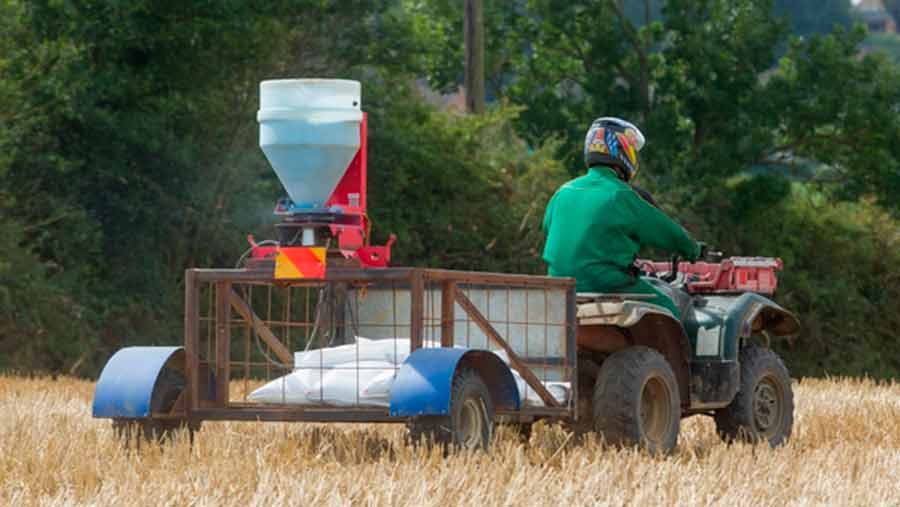Major slug pellet trial sees 60% less chemical in river water
 © Tim Scrivener
© Tim Scrivener The first year of a major UK metaldehyde-free farming trial has seen a 60% drop in levels of the chemical detected in reservoir tributaries.
Farmers within the natural catchments of six reservoirs in Northamptonshire, Suffolk, Essex and Cambridgeshire have been working with Anglian Water’s team of advisers over the past year on the Slug It Out campaign.
The area covers more than 7,000ha and as part of the campaign, all farmers have agreed to use the alternative to metaldehyde to control slugs on their land.
See also: Farmers fear rise of ‘sleepless’ slug population
The trial was launched to look at how levels of metaldehyde in rivers and reservoirs could be brought below the strict European standard of 0.1ug/litre (or parts per billion) in treated water.
Lucinda Gilfoyle, catchment strategy manager for Anglian Water, explained: “In the past, levels in reservoirs in our region regularly exceeded this and removing metaldehyde through treatment is currently not possible.”
The first year of the trial saw 89 farmers signing up to take part – a 100% uptake – with an estimated 1,613kg of metaldehyde removed from the farmed landscape.
Results published this week show that levels of metaldehyde detected in the Hollowell and Ravensthorpe Reservoirs in Northamptonshire were compliant with regulations and remained below the statutory limit during the trial’s first year.
However, while there were still exceedances in Alton Water in Suffolk, Ardleigh Reservoir near Colchester, Pitsford Water in Northamptonshire and Grafham Water in Cambridgeshire, overall levels were reduced significantly.
She highlighted that the average levels of metaldehyde in reservoir tributaries across all the catchments fell by 60% (see table), while the average peak levels detected within the reservoirs fell by 26%. Reservoirs are filled by water pumped from nearby rivers as well as being fed by tributaries.
“What the first year of our trial has revealed is that by working together we can reduce metaldehyde levels in raw water sources – but that removing metaldehyde from the fields is not the silver bullet solution some may have hoped for,” she said.
“We know that a more detailed and longer term strategy is needed if we are to comply with pesticide regulations, and we will be building on these results as we move forward to help identify the package of measures needed.”
Sam Paske, farm manager of Hail Weston Farms which manages land within the Grafham Water catchment, took part in the trial.
“We were approached by Anglian Water to take part in this trial and it was something we definitely wanted to be involved in. If we are going to preserve metaldehyde for use then we all need to work together to ensure it doesn’t reach water sources.
“After speaking to the catchment adviser we made simple changes to our normal integrated approach to slug management. I have not noticed any difference between metaldehyde and the alternative ferric phosphate product.”
Metaldehyde levels in reservoirs and tributaries, 2014-2015
|
|
2014 metaldehyde level (µg/l) |
2015 metaldehyde level (µg/l) |
% drop |
|
Alton (peak) |
0.088 |
0.087 |
1 |
|
Ardleigh (peak) |
0.102 |
0.097 |
5 |
|
Grafham (peak) |
0.236 |
0.171 |
28 |
|
Pitsford (peak) |
0.199 |
0.162 |
19 |
|
Hollowell (peak) |
0.187 |
0.163 |
13 |
|
Ravensthorpe (peak) |
0.275 |
0.123 |
55 |
|
Combined reservoir average (peak) |
0.181 |
0.134 |
26 |
|
Combined catchment tributary average (all samples throughout the year) |
0.984 |
0.390 |
60 |

